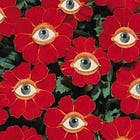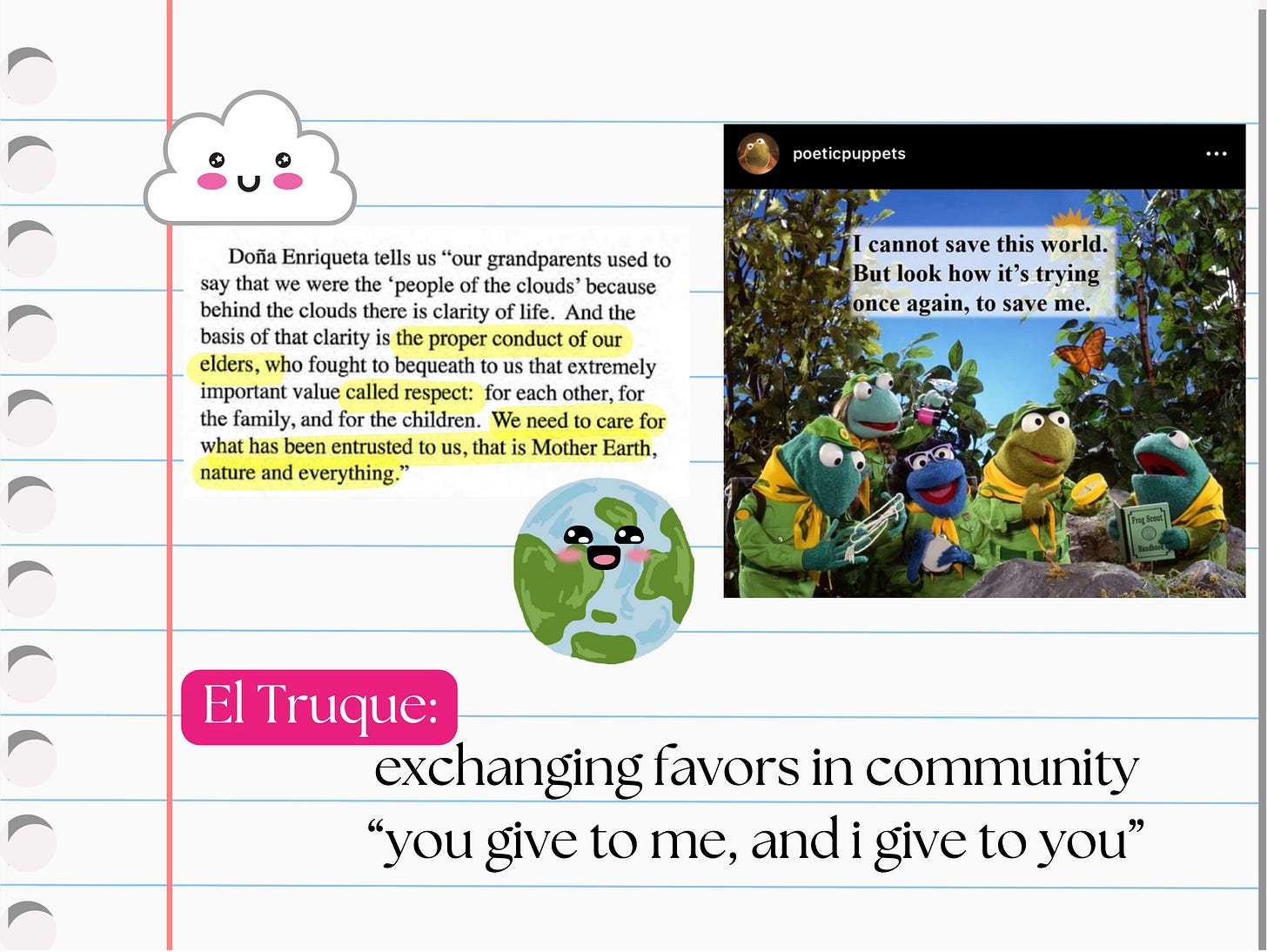I started my long-term travel/work/study journey in Oaxaca. Folks have asked me why Oaxaca? It all started with a class I took in 2023 called Indigenous & Decolonial Feminist Ways of knowing.
This class gave me answers to questions that had kept me up at night. I learned the language and gained understanding on things I’d always known instinctually and intuitively, but hadn’t been able to put into words. Along with learning about the Zapotec Curanderismo tradition from our professor and the independent studies we each completed on our ancestral healing traditions, we as a class were moved by the collective healing we can experience through the revivification of Indigenous Wisdom.
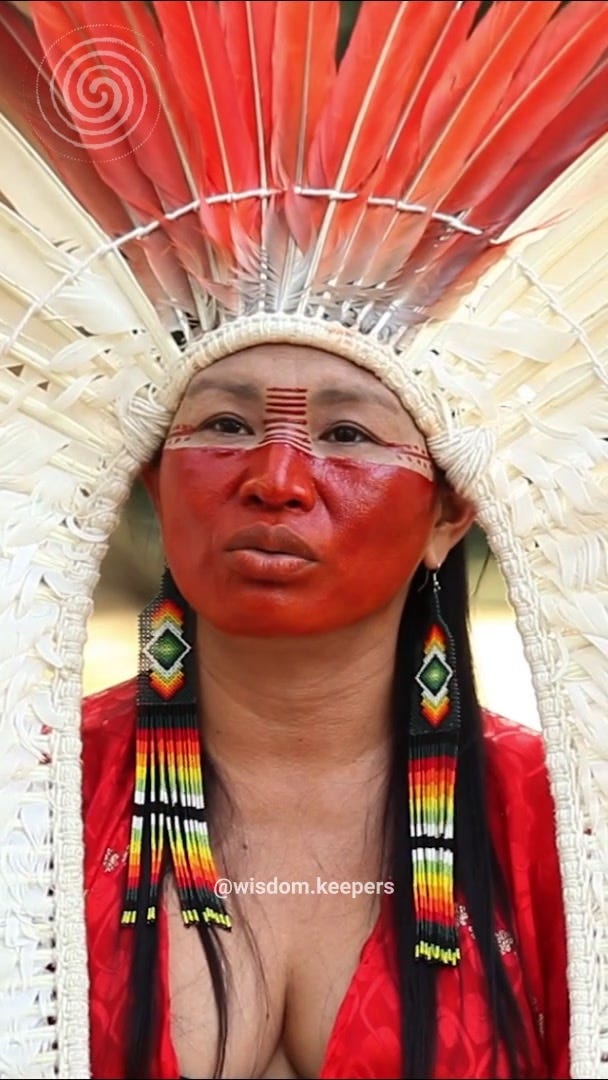
 Tiktok failed to load.
Tiktok failed to load.Enable 3rd party cookies or use another browser
“Imagine if all the spiritualities and the universe united. How big is that? When every spirituality of the world is united that is when the healing of the planet will come. Because each one will bring it’s essence. Each one will bring a crystal. Each one will bring healing. Each one will bring it’s consciousness. And when that consciousness comes round into the complete circle like a crystal ball. That light will emanate to the world. It will bring healing. It will bring new consciousness. It’s not in those weapons… no.”
Putanny - Yawanawa Tribe, Amazon Brazil
In this class, we got to meet a number of Indigenous Wisdom Keepers. Each began their talks with an acknowledgment to their lineage, honoring the ones before them who kept and preserved this knowledge.
I wouldn’t be doing this work, writing these words, on this life path without the impact of Dr. Pacheco and her teacher, Doña Queta. To honor these teachers who have inspired me and completely changed the trajectory of my life, I wanted to share a bit about their stories.
Tracing a Lineage - Honoring my Teachers 🙏🏽
I took this class last year in the second semester of graduate school. Dr. Pacheco designed the curriculum and facilitated the class, and it was really grounded in her own personal experience spending seasons in Oaxaca working with and learning from Curandera Doña Queta.
Dr. Pacheco designed a radical curriculum grounded in liberatory pedagogy, in learning for self-healing and transformation, in understanding the violence with which Indigenous Wisdom has been erased, dismissed, and exploited in Western Colonial/Capitalist contexts.
Take a look at the syllabus to get a sense of what I’m talking about. It’s pretty incredible, right?
I look up to Dr. Pacheco so much because to be teaching a class like this in a formal education setting is unheard of. We learned about dominant v. subversive knowledge systems, energetics of plant medicine, the role of spirituality in healing, grappled with the paradoxes and tensions of what we’re learning v. our indoctrination and conditioning we were traversing in each of our unique programs. While this class was offered in the Gender Women Studies department at UC Berkeley, most in the class were coming from other schools across campus - the business school, school of social work, education. So while we learned tremendously for our own self-healing, we also were working through how to integrate this learning in our respective professions, each of which is mired in the legacies of Colonial and Capitalist violence.
One of my favorite parts of how Dr. Pacheco led the class was in her personal storytelling, in sharing how she as a woman of color was navigating the same bullshit that we were navigating in our own programs. She shared stories of facing discrimination, in creating a curriculum with integrity in an institution with little, in reconciling the complex positionality of having mixed Chicanx heritage when learning, teaching, revivifying Indigneous Wisdom outside of its traditional context.
This class was first and foremost grounded in Dr. Pacheco’s own love and reverence for her teacher, Zapoteca Curandera Doña Queta. The way Dr. Pacheco talked about Doña Queta, she almost couldn’t put into words how much this woman has achieved in her lifetime, how uniquely complex and widely expansive her knowledge of medicine is, how rare it is to find wisdom keepers like Doña Queta still alive and working today, how lucky we were to meet with her and hear from her directly via video call. With no formal education, at a time when there were little professional opportunities for women, from the age of being a young girl, Doña Queta has pursued with unmatched devotion and discipline a life of service and healing.
Doña Queta is generous with sharing her lifelong hard-earned wisdom. She’s explicit in wanting to pass on this knowledge, in teaching and traning healers, in helping folks connect to their own heritage. It is in this spirit that I’m sharing Doña Queta’s story in her own words and sharing some of what I learned through Dr. Pacheco and our class together.
The Life of Midwife Curandera Doña Queta
The Zapotecs established civilization in Oaxaca, Mexico more than 2,500 years ago. Today there is a fierce and persistent practice in preserving the traditions of indigenous medicine and culture. Despite centuries of colonization and now a recent surge in neocolonial tourism, Zapotecs have been diligent in preserving culture, artisanship, food, music, stories, language, and traditional medicine.
Check out Doña Queta’s story in its entirety in this PDF here:
Doña Queta began her lifelong devotion to understanding and working with plants at the tender age of 9. Her paternal grandmother was a midwife in her native village and she began her education by keenly observing her grandmother’s work “through knotholes in her cabin.” Access to a midwife or traditional midwife has never been easy in the rural mountains of Oaxaca, often requiring walking on foot or riding on horseback to get to a mother in labor. At 16, she delivered her first baby (her sister’s). Not long after, people all over began to hear of her, travel to visit her, choose to come to her over doctors.
Despite not attending formal education, her background and expertise qualified her to train as a first aid emergency worker for the Mexican Red Cross in 1974. In 1990, on behalf of the National Indigenous Institute, she was trained as a rural community health worker. She spent the following decades traveling by foot, horse, boat across the mountainous rural region treating communities, training new health volunteers, building a network of traditional doctors for peer support and sharing expertise. She’s touched the lives of hundreds, if not thousands, and by extension many tens of thousands more, because of her devotion and physical-mental-emotional discipline in her work. Not to mention accomplishing all this at a time and place when this type of work was still discouraged in women.
When she says that she’s conducted over 2,000 births and not had a single loss of mother or child - this rate of success is inconceivable in a Western Ob-Gyn practice.
Indigenous Science has Western Science in a Chokehold
"I gave thanks to God because I had never been faced with complications. A few light ones, but I could always remedy them with herbs, a massage or a cerrada (a traditional technique used to close the mother’s energetic body after the birthing).”
Doña Queta
This is really where Doña Queta is set apart from her contemporary peers working in medicine.
I recently finished the book Witches by Brenda Lozano, which pays homage to the Oaxacan healer Maria Sabina. In the story, the healer Feliciana who is based off of Maria Sabina, has had people seek her out from all over the world to heal physical and spiritual ailments. One day she is shot by a neighbor faux shaman healer who is jealous of her popularity. Feliciana needs to be taken to a doctor, which she calls Sages of Medicine. Her physician saves her life, and afterwards they become colleagues and develop a friendship. The complex cases that had doctors stumped, he would bring to Feliciana for her wisdom and insight.
I have a dad who is a physician and at one point in time in my life, pursuing medicine was going to be my life path. I ended up getting a C- in Biology, so that was never going to happen lol. But aside from that, nothing about the western medicine practice was appealing to me besides the financial freedom. Years of greuling work, mental health challenges that are swept under the rug, normalized abuse in high-pressure settings, not to mention the system itself being so rotten that only a privileged minority have access to quality care. Hospitals operate like businesses, soulless machines, not centers for compassionate treatment and care. While these institutions claim to be bastions of innovation and progress, they often have miserable statistics when it comes to delivering quality care for all.
Doña Queta, like Feliciana, like other traditional Wisdom Keepers, don’t reject science. In fact, their work is deeply rooted in scientific method and practice. Google nor our sages of medicine do not even come close to the depth of knowledge that Doña Queta maintains - from her encyclopedia-like knowledge of plants to her holistic understanding of the body and its systems to her energetic and spiritual wisdom that underpins her practice - these traditional healers often eclipse their western peers in their success rates and satisfaction of patients.
Western Medicine and Academia privileges single-discipline expertise. Multi-disciplinary PhDs are both rare and taken less seriously, despite the complex reality of of our world that requires holistic systems lens. When our doctors look at our bodies, a general practitioner might ask us about our symptoms, run some tests, make a hypothesis on what’s wrong and then send us to one specialist after another in order to determine the root cause. So many of us with chronic pain and overlapping symptoms have only found ourselves humiliated, frustrated, and worse off when seeking out help.
On the other hand, whether Curanderismo, Ayurveda, Traditional Chinese Medicine or other indigenous healing practice - they see the body and its systems as whole. When one system is dysfunctional, it will impact the others. It’s why doctors are so often stumped - each specialist is only really looking at one system at a time.
The Maria Sabinas and Doña Quetas of the world won’t be found in our textbooks, academic journals, western education because they operate from a lens of seeing emotional and spiritual health as inextricably linked to physical wellbeing. These are systems in our bodies that are connected, when one is having trouble, it will inevitably impact the others. It is because these healers work with the irrational spirit of nature and energy that western science as a whole reject them entirely. Linda Tuhiwai’s writings on Decolonizing Methodologies and the beloved book Braiding Sweetgrass unpack how limited western conceptions of knowledge are, the violence with which Indigenous ways of knowing have been undermined and eradicated, and how we’ve essentially amputated some of the most integral parts of ourselves when we only view our wellbeing in fragmented parts. These perspectives and many stories of evidence demonstrate how Indigenous Wisdom keepers aren’t simply on par with their Western peers, but in fact overtake them with their rigor and holistic understanding of the body and the world.
Doña Queta’s Words of Wisdom on Spiritual Wellbeing
When we collectively are struggling with soul loss and soul sickness on unprecedented levels, Doña Queta offers us simple yet incredibly transformative ideas on how we might return to Mind-Body-Spirit alignment.
What is your Gift? How will you use it?
If you’ve been here for a minute, you know that I’ve spent a lot of time agonizing over what the point of being here is when everything is terrible.
I’ve also wondered how we go about making meaning, taking suffering and pain, and transmuting it into something … else.
I appreciate these two simple questions from Doña Queta because they point us to finding the divinity within ourselves and connecting it to the energy of the collective. These two simple questions can be a meditation for us to help us continuously hone in on meaning and purpose in our lives when all we want to do is escape the senseless pain.
El Truque
The world is on fire, the seams of the matrix are splitting open. Climate, wealth inequality, surviving ourselves until death. The scale of violence it requires to reinforce this system have been escalatingly erupting through the Maya.
The gift of being human comes with the responsibility of caring for our collective and our planet.
Doña Queta reminds us that our culture is sacred and we have to do the work of remembering. That we have to learn to return to relationship to earth, to respect our Mind-Bodies, to respect animals. This is how we revive our Knowing.
A Tour Guide I met in Oaxaca (through @zapotectravelbylily!) talked about how the practice of El Truque for centuries had been a method of collective survival remains as a cultural stronghold. There remains a culture of networks of mutual and interdependent relationships. This means during the good times and bad, that no one is left behind and surviving is not an independent endeavor. They see the world, the land, the people, our collective wellbeing as all inextricably linked.
The One Habit that would Change the World
This was a message so important that when we met with Doña Queta on the video call during the semester class, she re-named this as perhaps the most important task we could engage in to heal from our collective soul sickness.
When our Western Culture, White Supremacy, Capitalist violence perpetuates hyperindividualism, we begin to heal from this by engaging in the daily continuous task of acknowledging the divinity in the people, animals, and plants that surround us.
But I don’t think I fully understood the impact of this simple practice until I went to Oaxaca and experienced myself what exactly this means when a collective culture continues to engage in this subtle but meaningful way of relating to each other.
To Oaxaca ✈️
So you can see how much this class changed me and why it inspired me to go to the place where Dr. Pacheco and Doña Queta come from to learn more.
See part two, my travel diary, to hear more about my experience in Oaxaca.



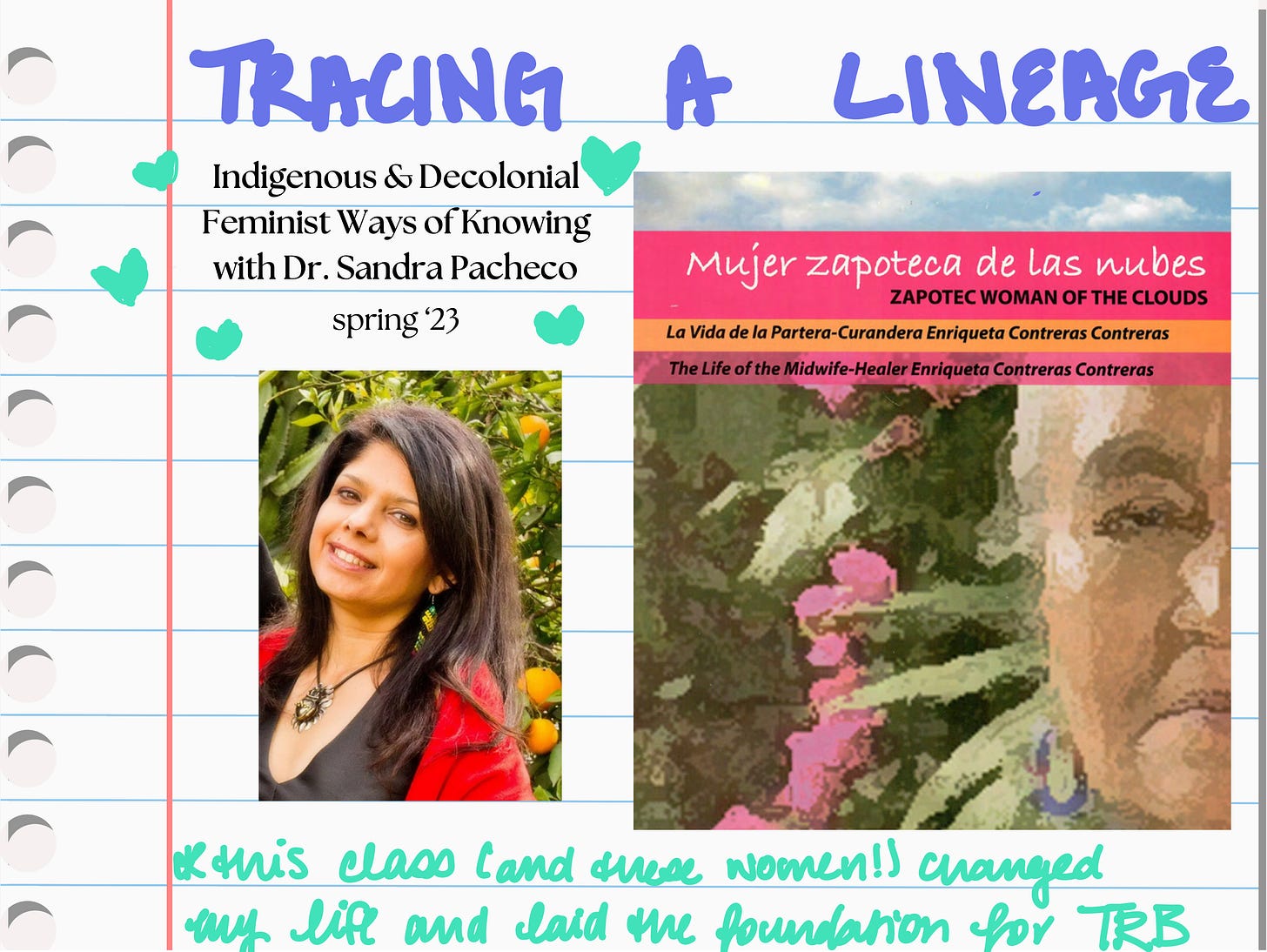
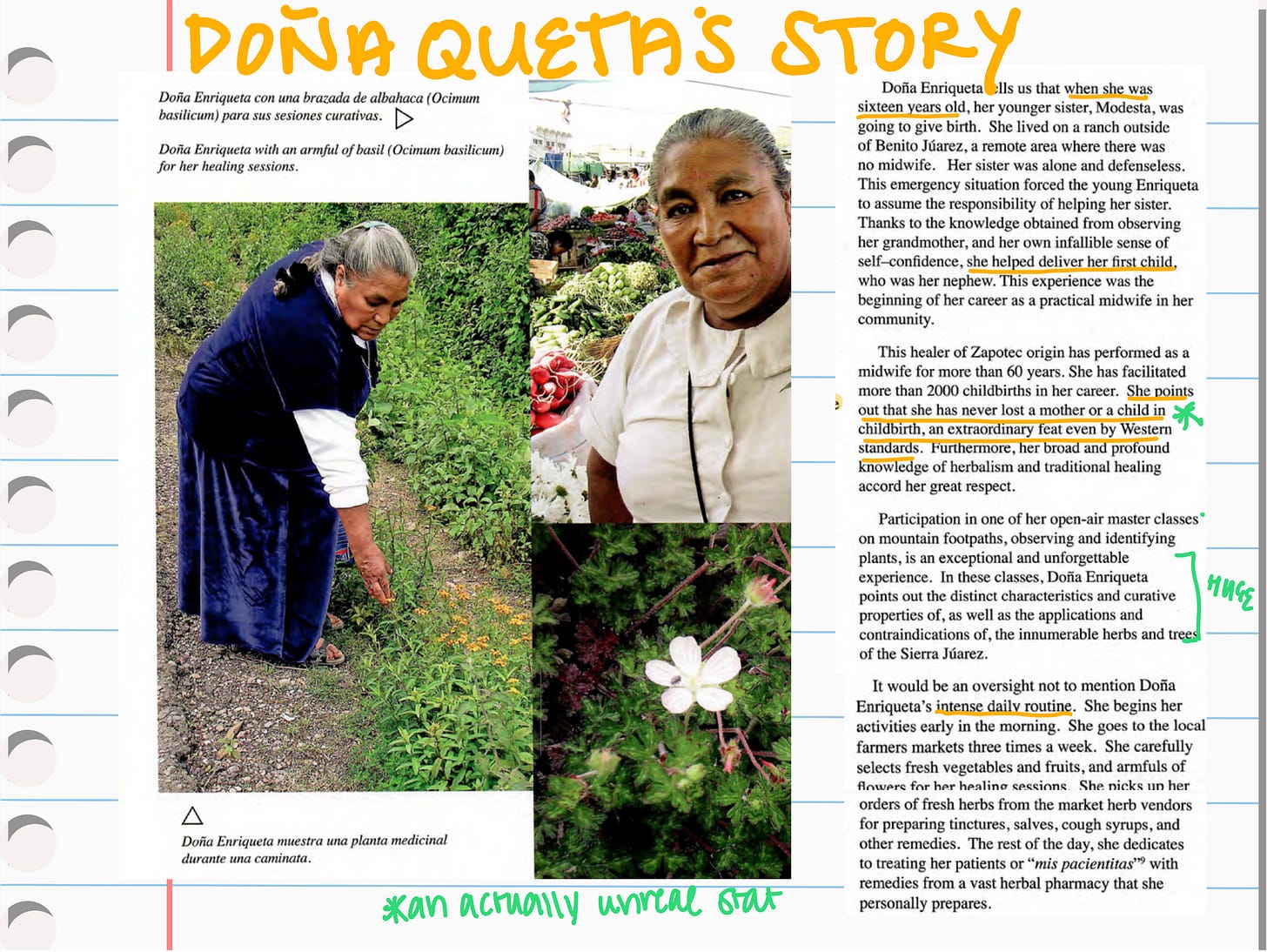
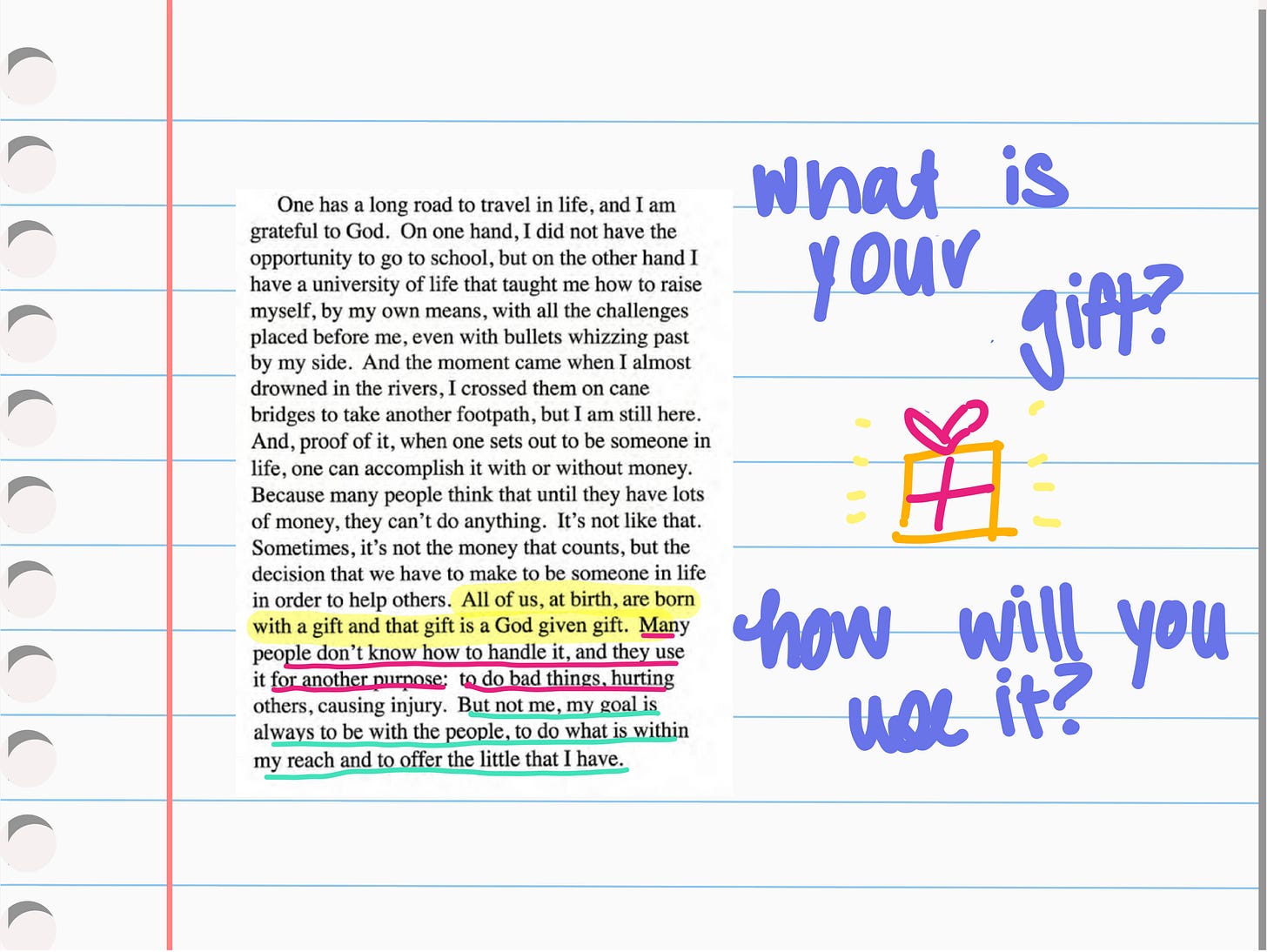
![[4.3] The Year I LEARNED to Dance with Darkness](https://substackcdn.com/image/fetch/$s_!pusA!,w_140,h_140,c_fill,f_auto,q_auto:good,fl_progressive:steep,g_auto/https%3A%2F%2Fsubstack-post-media.s3.amazonaws.com%2Fpublic%2Fimages%2Fc01e0186-57fb-40f1-b8f2-2325df2a5d45_1024x768.png)
![[4.4] Making Meaning + special announcement!!](https://substackcdn.com/image/fetch/$s_!HkQ-!,w_140,h_140,c_fill,f_auto,q_auto:good,fl_progressive:steep,g_auto/https%3A%2F%2Fsubstack-post-media.s3.amazonaws.com%2Fpublic%2Fimages%2F9a986f0f-d892-4594-b579-793734a46496_1080x1080.png)
